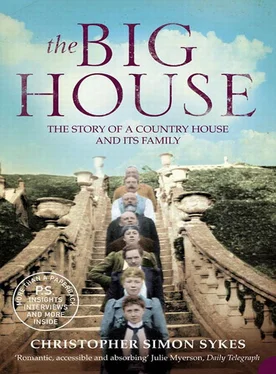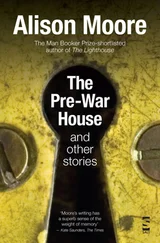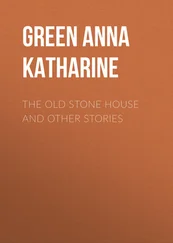It appears from this letter that she and Tatton may have formed some kind of sentimental friendship, for she refers to him as her ‘Pet’ and thanks him for a ring he sent her, set with a lock of his hair, which she is now wearing. ‘It shall never be taken from thence till the Wearer of it be dead,’ she assures him, continuing ‘This promise, slightly as it be made, I hold as sacred as the Friendship I long ago gave you without Reserve.’ She returns the compliment, sending him ‘Another, sett in the very same manner’, which she begs him to wear ‘until the hair of some Lady yet in the clouds, & justly preferred, has a stronger claim to its place.’ She finishes her letter by telling him that his sister, Elizabeth, wants his opinion on a horse. ‘Elizabeth, with her love, bids me tell you she has got a new horse, with a long tail , but will neither pass her opinion, nor mount it till you have been here.’ 29 Tatton’s close friendship with the Masterman Sykeses is further borne out by the fact that when they were painted by Sir Thomas Lawrence in 1805, he was included in the portrait.
On the death of Mark’s father, in September, 1801, the Masterman Sykes’s moved from Settrington into the newly completed Sledmere, though they kept the former as a second residence. The ‘improvidence’ which Mark had shown as a young man, and which he had so carefully reined in during his father’s last years, was now let loose. He inherited an estate that, in spite of the considerable annual income brought in from rents, was saddled with debts of over £30,000. This was because, to Christopher, rising incomes were an excuse to spend more on his land and increase investment. He saw the debt as a temporary necessity. Mark, however, did not share his father’s interest in agriculture. His interests were sport and books. Unfortunately for Sledmere, he was also a prolific gambler.
Within a few months of inheriting the estate he had saddled it with a debt that came close to being ruinous. Mark lived in an age when eccentric wagers between gentlemen were a common occurrence. No incident was too trivial to bet upon; the colour of a horse, the next day’s weather, the distance a man might walk, the impending birth of a child were all topics that might be the subject of a bet. A favourite speculation was on how long a man might live and the old betting book at White’s Club is full of such wagers. On 8 October, 1746, for example, Lord Montfort bet Mr Greville 100 guineas that Mr Nash would still be alive on the same day in four years’ time, while on 4 November, 1754, ‘Lord Montfort wagers Sir John Bland one hundred guineas that Mr Nash outlives Mr Cibber.’ 30 In a similar tome at Brooks’s Club, one member bet another 500 guineas to ten that none of the Cabinet would be beheaded within the following three years. 31
As the new landlord, Mark made it his duty during the first few months of his arriving at Sledmere to entertain his neighbours and tenants to supper. Among these were the various members of the clergy whose parishes lay within the estate’s boundaries. On 31 May, 1802, it was the turn of the Revd James Gilbert, rector of the adjoining village of Kirby Grindalythe, and during the course of the evening a heated debate took place on a subject which was on everyone’s mind at the time, namely the threat posed to Britain by Napoleon Bonaparte, the terror of Europe. A majority of the guests present, including the Revd Gilbert, took the view that in spite of the recent signing between the English and the French of the Treaty of Amiens it was only a matter of time before France attempted an invasion of England. Mark had a quite different theory. In his opinion, Bonaparte’s position was less secure than it looked because ‘the very atmosphere that [he] breathed was fraught with treason’, and even if he were to escape death in the hazardous pursuit of his ambitions then he would be killed by an assassin.
At this point in the proceedings, Gilbert stood up, no doubt less than steadily after the imbibing of large quantities of port, and in no uncertain terms expressed his belief that his host was wrong and that Bonaparte would in all likelihood live to see the achievement of his plans. So strong was his conviction on this point that he would lay a wager on it, there and then, of 100 guineas, on the condition that Sir Mark would agree to pay him one guinea a day for every day that Napoleon lived. ‘Done!’ cried Mark, in the excitement of the moment. Though the other guests present showed their disapproval of the proceedings with cries of ‘No, no, no wager!’ neither their host nor the rector chose to listen to them. The die was cast. 32
As it happened, Mark’s belief that Napoleon would be assassinated was not some foolish fancy. There had already been two attempts on his life, the second of which had come dangerously close to succeeding. The first, which took place in Paris on 10 October, 1800 and involved the Adjutant-General, Arena, and a Roman sculptor called Ceracchi, was a plot to knife him in his box at the opera while he was attending the first performance of Salieri’s Les Horaces . It was foiled by the arrest of the conspirators during the production. On Christmas Eve, he had a much closer brush with death when, en route to watch Haydn’s Creation , a bomb, ignited by three Breton royalists, Limoëlan, Saint-Réjant and Carbon, exploded in the Rue Saint-Nicaise as his coach passed close by. The windows of the coach were all smashed but miraculously Napoleon escaped without injury, though nine people were killed and twenty-six injured in the blast.
On the morning of 1 June, the day after the wager was laid, the Revd Gilbert, evidently a wealthy as well as an honest parson, sent his patron the princely sum of 100 guineas. On 8 September, with no sign of Bonaparte succumbing to an assassin, Mark returned the money and began the slow process of paying his part of the wager, seven guineas per week. The days rolled by, and as the warlike activities of the French increased and they consolidated and extended their domination of Europe in Holland, Switzerland and Italy, it became apparent that the so-called peace was nothing more than an uneasy truce. In May, 1803 the British declared war on France and with the threat of invasion once again raising its ugly head the government began the mustering of troops up and down the eastern maritime counties. The East Riding coast, though a considerable distance from the main body of French troops at Boulogne, was so perfect a potential landing place that there was a strong possibility the enemy might try their luck there. Up and down East Yorkshire, disbanded units of militia were reformed, including the Yorkshire Wolds Gentlemen and Yeomanry Cavalry, formerly commanded by Sir Christopher Sykes. Mark was its new commander and he raised 300 men, equipping them with a smart uniform of scarlet, with green facings.
Конец ознакомительного фрагмента.
Текст предоставлен ООО «ЛитРес».
Прочитайте эту книгу целиком, купив полную легальную версию на ЛитРес.
Безопасно оплатить книгу можно банковской картой Visa, MasterCard, Maestro, со счета мобильного телефона, с платежного терминала, в салоне МТС или Связной, через PayPal, WebMoney, Яндекс.Деньги, QIWI Кошелек, бонусными картами или другим удобным Вам способом.












![Edward Ellis - Adrift on the Pacific - A Boys [sic] Story of the Sea and its Perils](/books/753342/edward-ellis-adrift-on-the-pacific-a-boys-sic-s-thumb.webp)